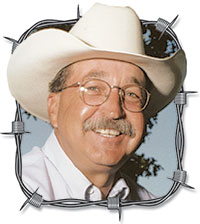Most good cattlemen will tell you their calving season, whether it be in the spring or fall, should be as close to 60 days long, as possible – certainly no longer than 90 days. As I’ve long suspected, I’m not in that category of good cattlemen.
In most years, during the last full week of April, I turn my bulls out with the cows. Given the gestation period of a cow, I can expect the first calf to be born somewhere around the first day of February, give or take a few days either way. In a normal year, 90 to 95 percent of my cows will give birth by the end of April, which should throw me into that category of good cattlemen, but….
On Nov. 14 of last year, I was in my UTV on the way to my favorite hunting spot on the first day of deer season. As I traveled through the herd of cows at that farm, something caught my attention. It couldn’t be – but it was – a brand new baby calf suckling its mother. Shocked and surprised, I turned the vehicle around and headed toward the newborn, only to discover that it was the wrong color to be out of one of my bulls (not to mention that my bulls were 2 miles away at the conception date), but exactly the color of my neighbor’s bull. Oh, well, as another one of my neighbors says, “A live calf is always welcome at my place.”
The rest of my cows started calving during the last week of January, and all but a handful had completed their task by the end of April. I had a couple born in May, five in June, and three in July. I still had one old cow in the north pasture that hadn’t calved, and I suspected she wasn’t even bred and was the perfect candidate to be culled this fall. As my youngest son has been checking cattle every weekend for me while I recovered from surgery, he too surmised that No. 3164 did not look pregnant and should probably make the trip to town this fall.
Last week, my doctor finally cleared me to resume tractor driving, so I hooked up to the cutter and began the task of clipping the pastures one last time. As I began the first pass in the north pasture, I could hardly believe my eyes when old No. 3164 emerged from the edge of the woods, with a healthy, red newborn in tow. It was Aug. 29.
I was never very good in math, but I believe that made my spring calving period, this past year, 288 days long. I know that’s about three times as long as what is recommended by the experts, but it should also be noted that 100 percent of my cows did calve – eventually. It’s been 51 years since I took that animal husbandry course in college, but I think a 100 percent conception rate might, at least, throw me back into the category of an average cattleman.
Jerry Crownover is a farmer and former professor of Agriculture Education at Missouri State University. He is a native of Baxter County, Arkansas, and an author and professional speaker. To contact Jerry, go to ozarksfn.com and click on ‘Contact Us.’







